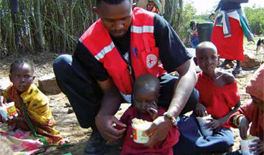World migration report 2024
The International Organization for Migration (IOM) launched the World Migration Report 2024, which reveals significant shifts in global migration patterns, including a record number of displaced people
The International Organization for Migration (IOM) launched the World Migration Report 2024, which reveals significant shifts in global migration patterns, including a record number of displaced people
This S R Hashim Committee report on urban poor submitted to UPA government in December 2012 set the criteria for identifying the poor living in urban areas for various government schemes.
This paper tries to break down the complicated journey of how climate displacement and migration have been handled in legal and normative frameworks, primarily looking at how the issue has been addressed
This report explores the interrelationships among rainfall variability, food and livelihood security, and human mobility in a diverse set of research sites in eight countries in Asia, Africa and Latin
The climate induced forced migration is on the rise, with alarming proportion, though human migration is not new. Coupled with a number of hydrological, geological and socio-economic factors the impacts

<p><span id="itro1">This 2012 edition of World Disasters Report released by International Federation of Red Cross and Red Crescent Societies focuses on the plight of people forcibly displaced by conflict,
The aim of the presented paper is to demonstrate environmentally-induced displacement as an increasingly important category of population movement that represents a new set of challenges to the international
Climate change increasingly affects the livelihoods of people, and poor people experience especially negative impacts given their lack of capacity to prepare for and cope with the effects of a changing
During the monsoons in Thailand, floods pose significant risks to the country’s population. Yet, despite its regular occurrence, the magnitude of economic losses arising from the consequences is poorly
Kerala is heading for a significant phase in its demographic transition with the state moving towards achieving zero population growth rate, which will result in an increase in scarcity of labour. With a very low fertility rate and stabilising death rate, Kerala is expected to achieve zero population growth rate in 25 to 30 years, a stage indicating the incipient decline of the population, according to the State Urbanisation Report.
The prevalence of dengue is more in Delhi compared to any other part of the country. In 2010, not only the total number of dengue cases in the city went up manifold but the cases were far more spread out